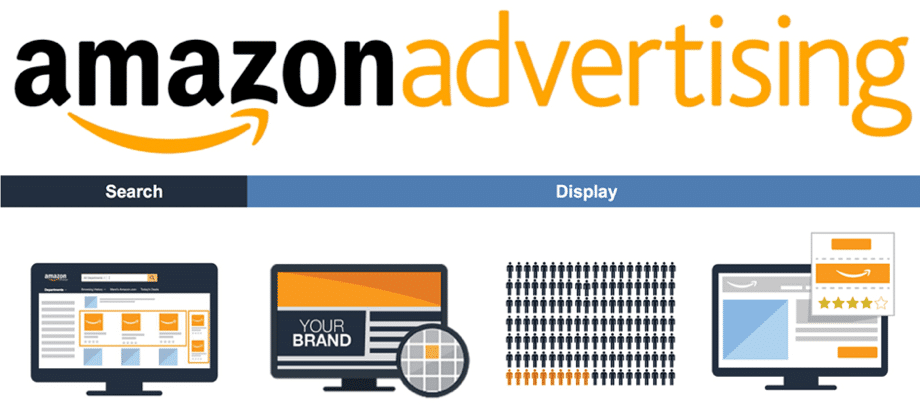
Becoming a savvy seller on Amazon takes time and a great deal of patience. Most new sellers take the plunge into the eCommerce world without paying heed to a series of factors that, certainly, play an important role in determining whether an Amazon business will be successful or not. Some of these factors are fees, fulfillment, and advertising.
But don’t get discouraged!
Implementing an adequate selling strategy can be a daunting undertaking for any company, and some new business owners just want to save the expense and hassle of doing things on their own. Therefore, they rather put their business in the hands of experts to have an easy, cost-effective, and more convenient start.
If you are planning on managing your business without the assistance of an experienced eCommerce agency, this article will help you grasp some of the most critical factors that come into play when trying to build a successful business on Amazon.
How Do I Sell Things on Amazon?
One of the most important questions sellers have when they want to start their Amazon business is “What platform do I end up going with?”:
- Seller Central, or
- Vendor Central
The main difference between sellers and vendors is who has more control over their products.
When it comes to Seller Central, the good news is that anyone can just sign up and start selling right away. You get fast payments and possible higher margins. As a third-party seller, you have more control over your products. And since you sell your products directly to customers, you set your own prices. (You can handle your own logistics or use Amazon’s fulfillment program.)
Setting up an Amazon Seller Account on Seller Central has several steps and requirements, including a business services agreement, providing business and tax information, contact information, bank and credit card information, and what products you plan to sell.
On the contrary, getting access to Vendor Central is not as easy. You can only join via invite from the corporate team. Since you will be selling your products directly to Amazon at wholesale rates – not your customers – they will not only maintain ownership of your products but they will also set their price. Then, in the marketplace, they will be listed as “Sold by Amazon”. You will be in charge of managing the back-end of the supply chain of your business, however.
You have access to Amazon marketing services on both platforms.
Selling on Amazon: Individual Account vs. Professional Account
When you start selling on Amazon Seller Central, you will have to decide whether you want an Individual or a Professional account.
What’s the difference? The price.
In a nutshell, the Individual account comes with a $0.99 per-item-sold fee, whereas the Professional account costs $39.99 per month.
Amazon specifies:
“The Individual selling plan is for sellers who don’t need access to inventory tools and reports for volume selling. Under the Individual selling plan, you don’t pay a monthly subscription fee. You pay a per-item fee in addition to applicable fees.”
“In the Professional selling plan, you pay a nonrefundable monthly subscription fee regardless of whether you list or sell anything. You don’t pay a per-item fee when an item sells. All other fees are charged as applicable. The Professional selling plan gives you access to inventory tools to upload batch files and manage your orders through feeds and reports. These tools are beneficial to most medium- to large-size businesses.”
Selling on Amazon: Fees

Now that you’ve chosen the type of account that best suits your needs, you will have to cover the following fees in order to kick off your Amazon business:
Subscription Fee – With an Individual Seller account, you cannot sell more than 40 units a month. But with a Professional Seller account, which is what the majority of people have, you won’t only pay a per-item fee, you will also become eligible for the FBA “Prime” badge.
Referral Fee – Amazon is charging you a fee for allowing you access to their HUGE customer base. The referral fee will be between 8 or 20%, depending on your product category.
Fulfillment Fee – Each fee is based on your product weight and dimensions. But they go from $2.41 for a small standard-size package (10 oz or less) to $6.00 for a large standard-size package (3 lb to 21 lb).
Closing Fee – This only applies to Media products: DVD, music, video games, consoles, software, and computers. You will pay an extra $1.80 each time you sell one of these items.
Monthly Storage Fee – This fee will also be determined by the weight and dimension of your product, how much cubic space your product is occupying in the Amazon warehouse, and it will be charged each 7th and 15th of every month.
Long-Term Storage Fee – On the 15th of every month, Amazon runs an inventory cleanup. If your inventory has been stored in a US fulfillment center for more than 365 days, you will be charged a long-term storage fee (LTFS) of $6.90 per cubic foot or a $0.15 per-unit long-term storage fee, whichever is greater. We’ll show you how to avoid these fees.
Shipping fee – Once you create a shipping plan, you will have access to Amazon partnered carriers’ fees – each carrier has different fees.
Amazon Start-Up Cost
According to Startupbros.com, this is how much it would cost you to start selling on Amazon:
- Buying Initial Inventory ($150)
- Opening an Amazon Account ($39.99)
- Buying UPC Codes ($10)
- Investing in Product Photography (Free – $295)
- Creating a Logo and Product Branding ($24)
Total Amazon Business Lean Startup Cost: $224 – $518
Note: These figures can range depending on how much you’re willing to invest and how much you’re willing to bootstrap some costs, in the beginning, to keep startup costs low.
Selling on Amazon: Fulfillment

Amazon is very serious about customer service; therefore, it provides its Sellers with two fulfillment strategies to meet their customer needs: Amazon FBA and FBM.
The FBA (Fulfillment By Amazon) Program makes fulfillment smooth and easy for sellers. With FBA, Amazon handles all things related to shipping and customer service.
These are some of the services included in the FBA program:
Amazon Partnered Carrier program: Amazon-partnered carriers offer discounted rates for shipping your inventory to Amazon.
Multi-Channel Fulfillment: Have Amazon fill orders for the inventory that you sell on your own website and other channels.
FBA Label Service: Amazon will apply barcode labels to your inventory for you. A per-item fee applies.
FBA Prep Service: Amazon will prepare your inventory so it meets FBA prep requirements. A per-item fee applies.
FBA Repackaging Service: Amazon will repackage your eligible FBA items that buyers have returned so the items can be resold.
Inventory Placement Service: Send all of your inventory to a single fulfillment center, and Amazon will distribute it for you. A per-item fee applies.
Manual Processing Service: If you do not provide box content information when you ship inventory to FBA, Amazon will manually process your boxes at the fulfillment center. A per-item fee applies.
Probably, fulfilling orders yourself and being in control of the entire process is what resonates better with your managing strategy; if that’s the case, Fulfilled by Merchant (FBM) is the right option for you.
If you sell big or heavy items, you can ship them for less than what Amazon would charge you. This can save your margins, especially when you don’t sell very many of that particular product.
Selling on Amazon: Advertising

When new sellers choose to venture into Amazon’s unknown grounds, without receiving any guidance, most of them end up losing their precious time – and a huge amount of money – because, for starters, they haven’t even defined their brand identity, which results in bad advertising practices and, thus, low sales.
Amazon provides sellers and advertisers with a tool that enables them to reach exclusive Amazon customers at scale across different devices and formats through display and video ads to create emotional connections with customers: Amazon DSP.
Read our recent post “How to Use Amazon DSP Audience Builder” and learn about how you can start attracting the right customers to gain ground in the world’s most renowned eCommerce platform, Amazon.



